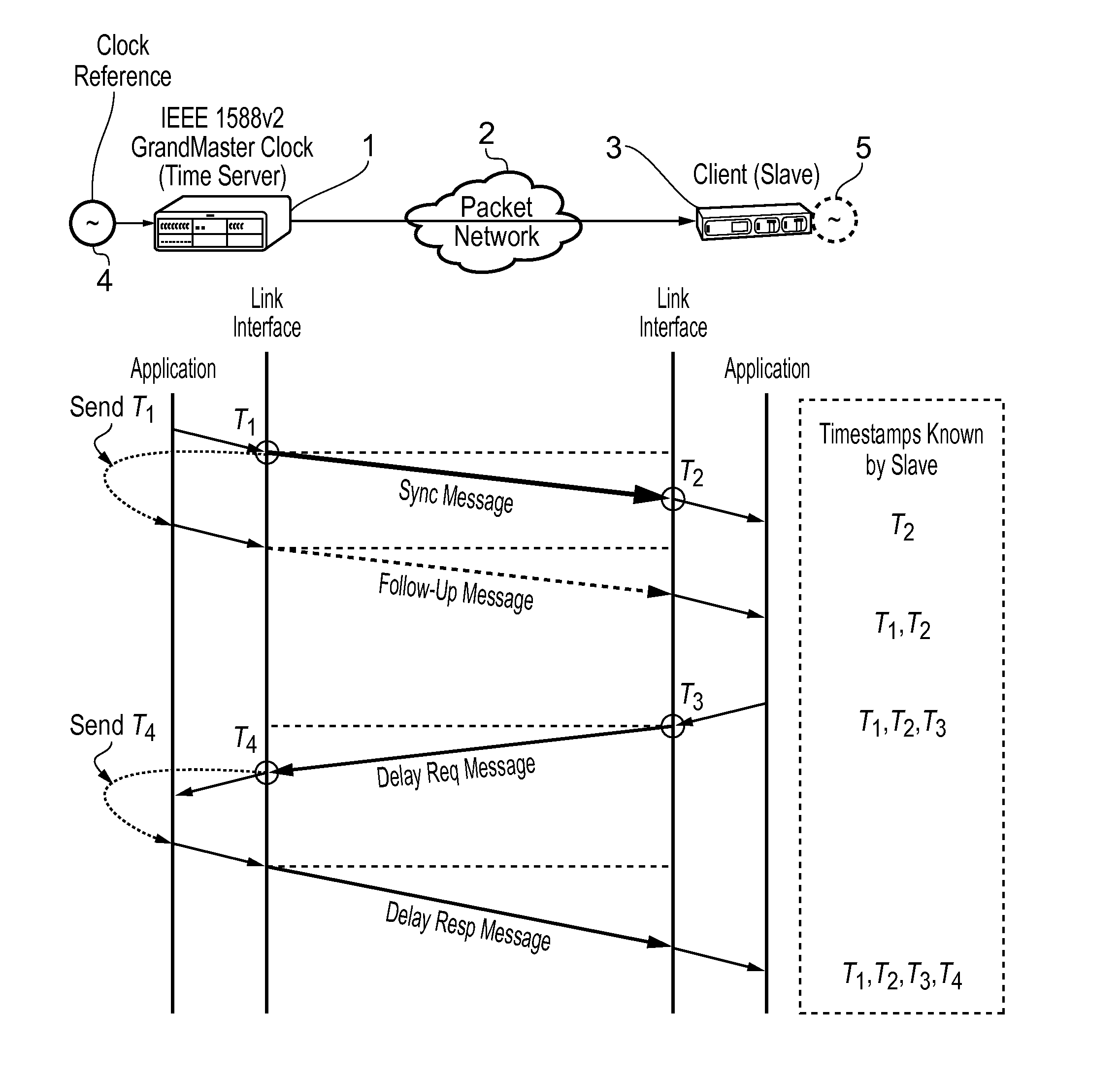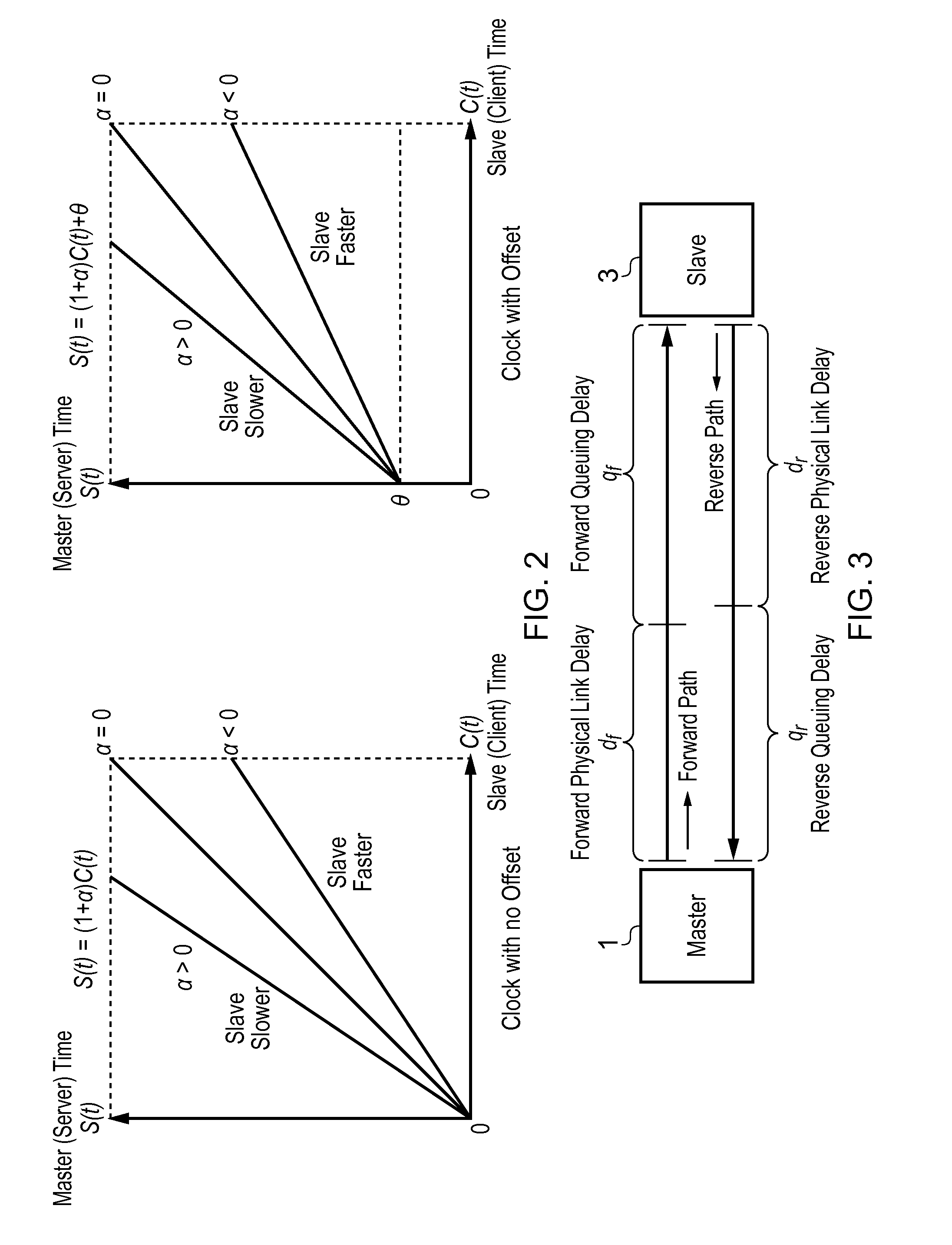Method and devices for compensating for path asymmetry
a path asymmetry and path technology, applied in the field of path asymmetry estimation and compensation, can solve the problems of inability of end-to-end tcs to solve this kind of asymmetry, communication paths are not perfectly symmetric, and timing support mechanisms are unable to correct for delay, so as to achieve the effect of minimal forward delay and minimal reverse delay
- Summary
- Abstract
- Description
- Claims
- Application Information
AI Technical Summary
Benefits of technology
Problems solved by technology
Method used
Image
Examples
Embodiment Construction
[0025]Accordingly, at their broadest, methods of the present invention provide for estimating the asymmetric delays in communications between a master device and a slave device based on the intervals between the sending of timing messages and the receipt of the timing messages by the respective devices.
[0026]A first aspect of the present invention provides a method of estimating asymmetric delays in communications between a master device and a slave device connected by a network, the method including the steps of: sending to the slave device first and second timing messages from the master device and respective first and second timestamps being the time of sending of the first and second messages according to the master clock; recording as third and fourth timestamps the time of receipt of the first and second messages at the slave device according to the slave clock; sending third and fourth timing messages to the master device from the slave device and recording as fifth and sixth...
PUM
 Login to View More
Login to View More Abstract
Description
Claims
Application Information
 Login to View More
Login to View More - R&D
- Intellectual Property
- Life Sciences
- Materials
- Tech Scout
- Unparalleled Data Quality
- Higher Quality Content
- 60% Fewer Hallucinations
Browse by: Latest US Patents, China's latest patents, Technical Efficacy Thesaurus, Application Domain, Technology Topic, Popular Technical Reports.
© 2025 PatSnap. All rights reserved.Legal|Privacy policy|Modern Slavery Act Transparency Statement|Sitemap|About US| Contact US: help@patsnap.com



